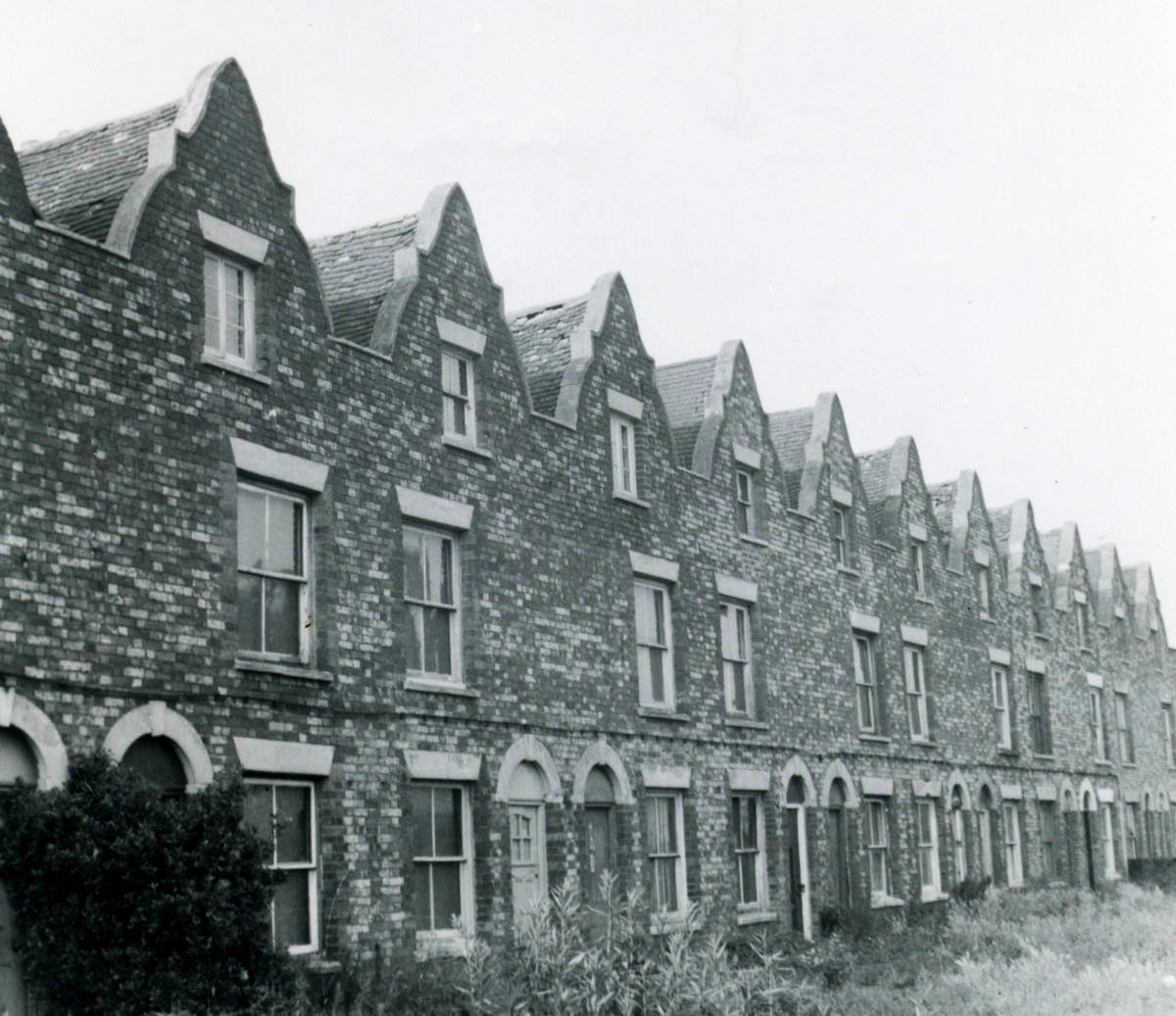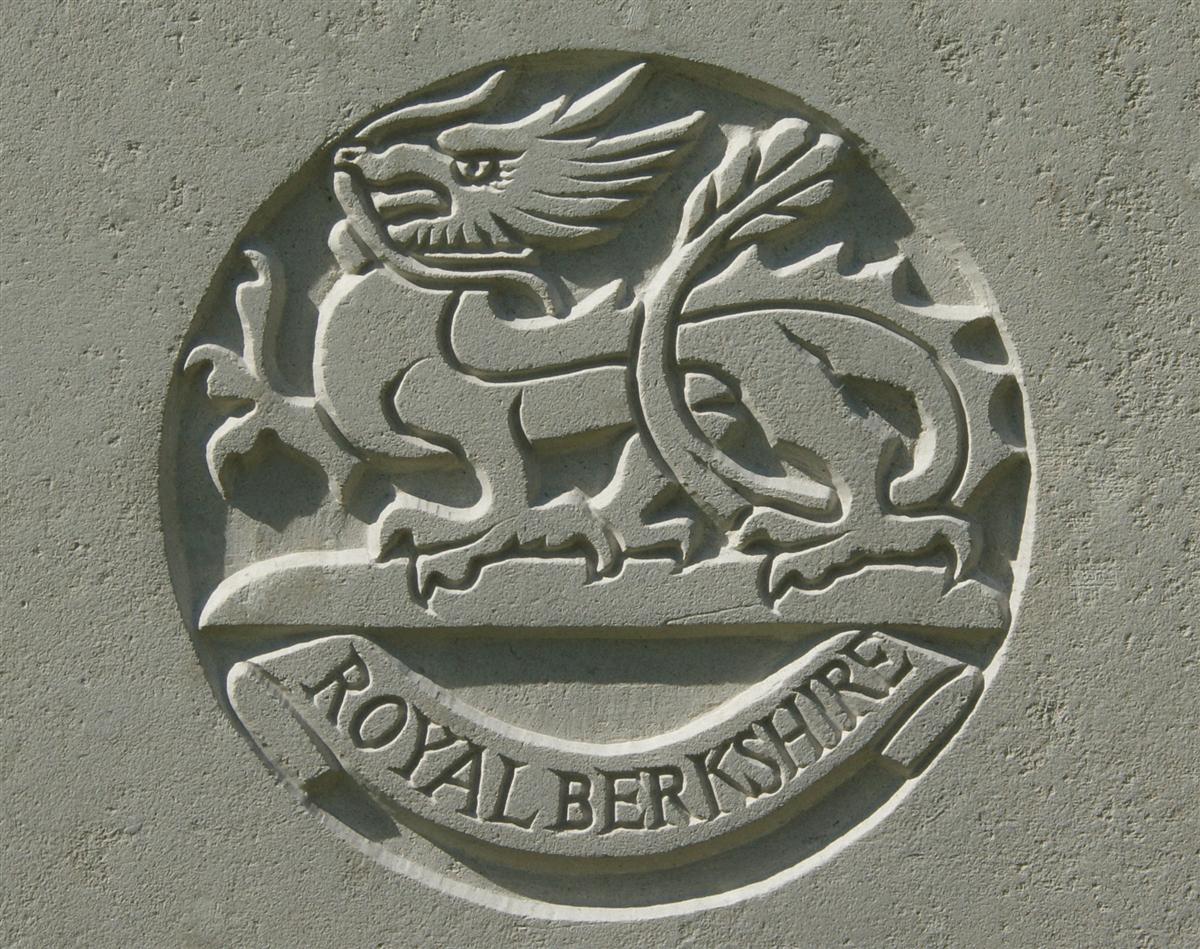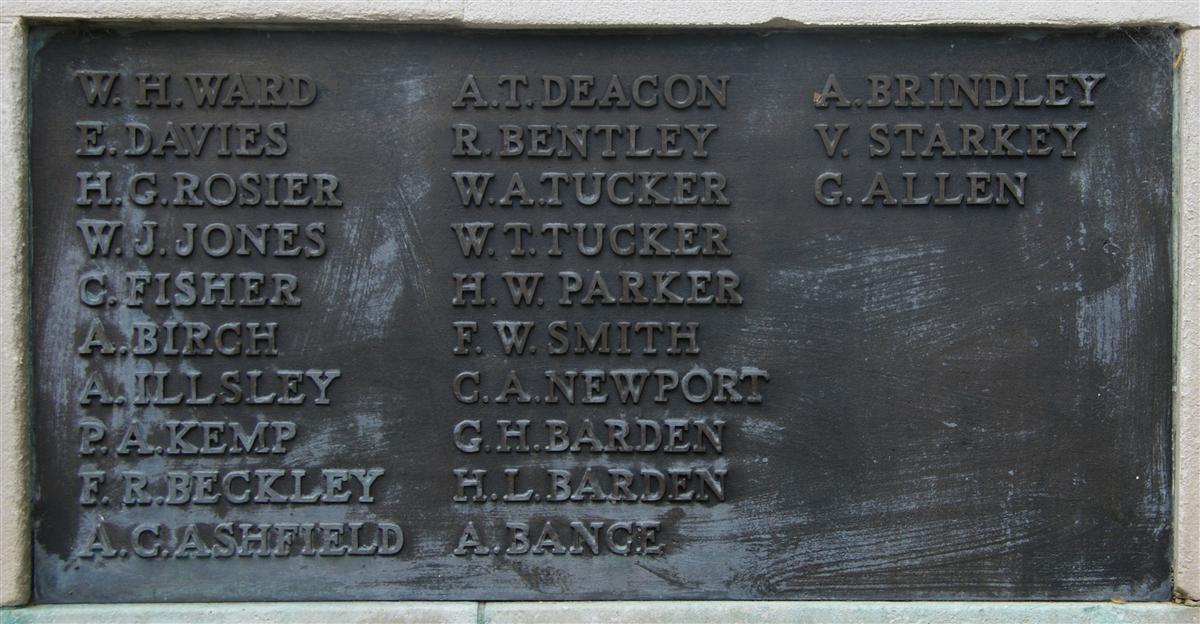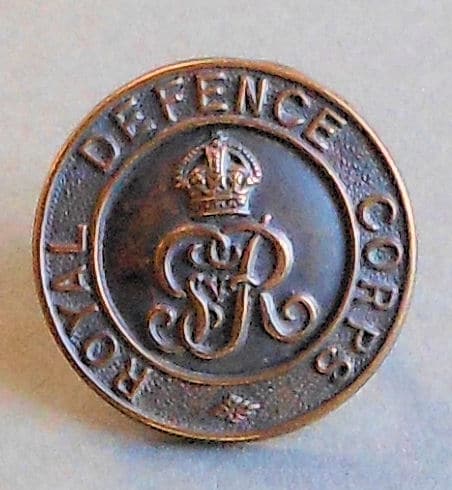William Herbert Ward
Private William Herbert Ward 15803, 2nd Battalion, Royal Berkshire Regiment
William was born in Newbury on 6 January 1887 the son of William Ward and his wife Louisa (née Jennings). He had many siblings – in total William and Louisa had 13 children, three of whom died in infancy. The ten survivors were James John (born 1877), Thomas Henry (1882), Beatrice Rosa (1885), William Herbert (1887), Edith Annie (1888), Elizabeth ‘Bessie’ May (1892), Harry (1894), Mary Louise (1895), Rupert (1897) and Agnes Kathleen (1900). All but one of the children were born in Newbury, the exception being Edith, who was born in Staines, Middlesex in 1888.

Jack Street, Newbury, shortly before its demolition in 1962. (Jim Irving) |
William was educated at St Mary’s Infants School in Speenhamland and St Nicolas National School in Enborne Road. He left school on 25 February 1901 to start work as a joiner – a month later he was listed in the census as a ‘carpenter apprentice’. The traditional apprenticeship lasted for seven years at the end of which the apprentice would be a fully trained craftsman. It was a good system that had stood the test of time, yet William’s entry in the 1911 census listed his occupation as ‘labourer’ – not a skilled craftsman at all. Perhaps he had proven an inept pupil? Perhaps he had found a labouring job that paid better than carpentry – a problem with the apprenticeship system was that the potential financial rewards would come after qualification.
When war broke out in August 1914 many young men rapidly answered Lord Kitchener’s call for 100,000 men to make a new army – many more than 100,000! By the end of 1914 almost a million had enlisted. William joined up with the Royal Berkshire Regiment in Reading on 8 December 1914 – his medical report gives a hint as to his appearance; he was 5ft 4ins tall and weighed 8 stone.
His brothers were all in uniform:
Newbury Weekly News, 30 December 1915 – Local War Notes
Mr and Mrs William Ward, of 28, Jack-street, Newbury, have a family of five sons and five daughters. All the sons are on active service, John on HMS Robina; Thomas, National Reserves; William, 2nd Royal Berks; Harry, Australian Rifles; Rupert, Oxon and Bucks Light Infantry. Another family doing their full share.

The regimental badge of the Royal Berkshire Regiment, as used on CWGC headstones. |
William was lucky enough to survive his first few months in the line (so many didn’t) and would have been considered a veteran by the time the battalion took part in the Battle of the Somme in 1916 taking very heavy losses (437 men killed, wounded or missing) on the opening day at Ovillers.
He survived that dreadful day – perhaps one of the lucky ones who were held back in reserve (all battalions retained a number of officers and men around whom the unit could be rebuilt in the case of massive losses); perhaps he struggled across no-man’s-land and back with barely a scratch.
By mid August the battalion was back in the line even mounting a trench raid in September but it was not called upon to make another battalion assault until 22 October – by which time William was no longer with it.
On 20 October, while the battalion was in brigade reserve (out of the front line, but close enough to move forward quickly to its support should the Germans attack). The battalion diary for the day is not very informative:
War Diary, 2nd Battalion, Royal Berkshire Regiment – 20 October 1916
In Brigade Reserve. 2 ORs wounded in action, 1 OR accidentally wounded.
Sadly, William was one of the 2 ORs (other ranks) wounded in action receiving a gunshot wound in his head. A gunshot wound (gsw) could mean that he was targeted by a sniper or machine gunner, perhaps while on a working party maintaining/improving trenches, moving supplies forward etc - or it could mean that he was hit by a shrapnel ball from an artillery shell.
The wound meant the loss of his right eye and metal fragments entered his brain, resulting in partial paralysis of his left side, notable his arm. Naturally he was evacuated along the medical chain back to hospital in England. After treatment he was discharged from the army on 4 April 1917. Unable to work he was awarded a war pension. There remained some hope that the paralysis would pass with time, but he was not given much time.
 William's name on Newbury War Memorial. (top left) |
As his tuberculosis was deemed not to be attributable to his war service he is not recorded on the Commonwealth War Graves Commission’s ‘Debt of Honour’ database and is not officially regarded as one of the fallen of the Great War. His family evidently disagreed and put his name forward for inclusion on the Newbury Town War Memorial, where it can be found on Tablet 6.
Family:
James was recorded in the newspaper article (above) about the family’s service to its country as serving on HMS Robina – the inference being that he was serving in the Royal Navy. In fact he was a civilian, serving as a merchant seaman on the HMS Robina, which was a small passenger vessel that was requisitioned by the navy in November 1914. It was used as a gateship for Portsmouth Harbour. The navy probably took over most of the crew with the ship, hiring them to man the vessel. The role of a gateship was to open and close the harbour boom and/or submarine netting – in effect the gate keeper for the harbour.
However, James did serve in the armed forces, though this was before the Great War. On 4 October 1895, aged 18, he enlisted as a Regular into the Royal Berkshire Regiment (having previously served in the militia battalion). He served in uniform until 21 March 1903 – including time in the West Indies, South Africa (during the Boer War) and Egypt. His service in South Africa earned him the Queen’s South Africa Medal (with clasps for Johannesburg, Diamond Hill, Wittebergen and Cape Colony) and the King’s South Africa Medal with clasps for 1901 and 1902. From 1903 until 1907 he was living as a civilian while remaining a member of the Reserve. In 1904 he married Matilda Jane Taylor. In 1907 his 12 year commitment to the army ended, but he opted to sign on for a further four years with the Reserve (reserves were paid a small weekly sum and had to do very little to earn it in peacetime). On 3 October 1911 he finally left the army for good, by which time he was working as a ship’s fireman and living in the Northam area of Southampton. By the time war came in August 1914 he was 37; perhaps he was tempted to volunteer for army service, but probably saw work for the Navy as ‘doing his bit’. He died in Newbury in 1959.

The badge of the Royal Defence Corps |
When the Newbury Weekly News printed its little piece about the patriotic Ward family Thomas was listed as a member of the National Reserve. This was a strange element of the army, more of a club for old soldiers than a force that had a planned purpose in wartime. In reality it was no more than a register of time-expired veterans willing to do their bit. This implies that Thomas had served in the armed forces in some manner (membership included ex-sailors and militiamen as well as regular soldiers). The Newbury contingent mobilised as soon as war was declared and were affectionately referred to as ‘the old and bold’. A contingent was sent to the New Forest to guard a railway line, but many remained in Newbury as guards at the internment camp that was created at Newbury Racecourse to hold German civilians rounded up by the authorities all over the country. As the fighting began in France additional space was made to house prisoners of war.
The camp became something of a cause célèbre when a German newspaper printed accusations of appalling living conditions and barbaric treatment of internees. An investigation by a neutral country (USA) exonerated the British, but the camp was closed soon after (as winter arrived the accommodation in stables and tents was inadequate). Some of the guards made trips to the Isle of Man escorting internees to the island, where a purpose-built internment camp at Knockalee housed most of the long-term internees from Newbury and other similar camps. Once the Racecourse camp was closed the guards were moved to guard prisoners of war housed in old ships in the Solent off Ryde. Eventually they became part of a new Royal Defence Corps and guarded PoW camps at Weston-super-Mare and Barton-on-Sea.
The fittest men were taken from the National Reserve and into the army proper – experienced men, especially NCOs were desperately needed to help turn hundreds of thousands of raw recruits into soldiers. As the war went on the fitness level requirements fell and more National Reservists made it to the fighting fronts, among these was Thomas, who served overseas with the 1st/4th Battalion, Royal Berkshire Regiment. He did not go overseas before 1916 but it is probable that he saw action in the later years of the war. Sadly his service record has not survived so it has not been possible to learn more about his war.
Rupert enlisted into the Oxfordshire and Buckinghamshire Light Infantry (No 20994); he did not go overseas until 1916 at the earliest. After serving for a period in the infantry he was transferred to the Royal Engineers (No 245526). Once again the loss of his service record means that nothing can be known what lay behind this move. He survived the war and died in Newbury in 1944 aged 47; he was buried in Shaw Cemetery on 25 March.
Harry served with the Australian Expeditionary Force, but it has not been possible to determine for sure, which of the Harry Wards serving with that force is him. The most likely is Harry Jennings Ward, though his service record states that he was 31 in 1915, not Harry’s age of 21. It is possible that this is a mistake – after all, Harry’s mother’s maiden name was Jennings and he gives a sister Bessie as his next-of-kin (Elizabeth was known as Bessie). Harry Jennings Ward enlisted on 12 July 1915, served for a few weeks at Gallipoli before going to France in March 1916. On 15 April 1916 he was wounded ‘by premature explosion of bomb’ – probably a training accident. His active roll in the war ended at this point. After treatment in several hospitals and convalescence he was sent back to Australia and discharged in Sydney on 28 May 1918.

Find a memorial :
| Died this day: | |
| 14 January 1946 | |
| H C Waite | |
| Lower Basildon |

Like this site? Show your appreciation through a donation to a great charity.